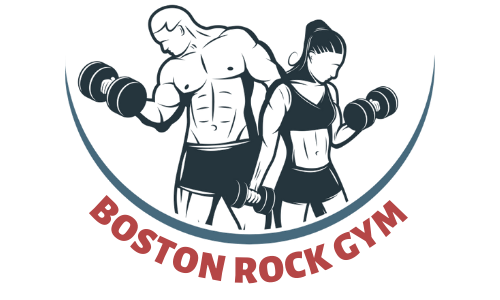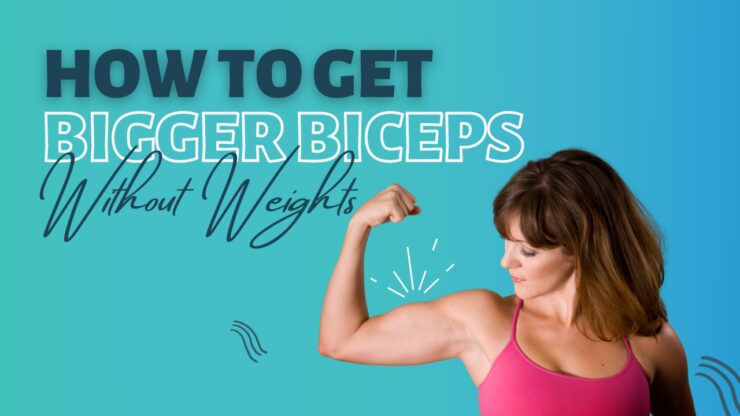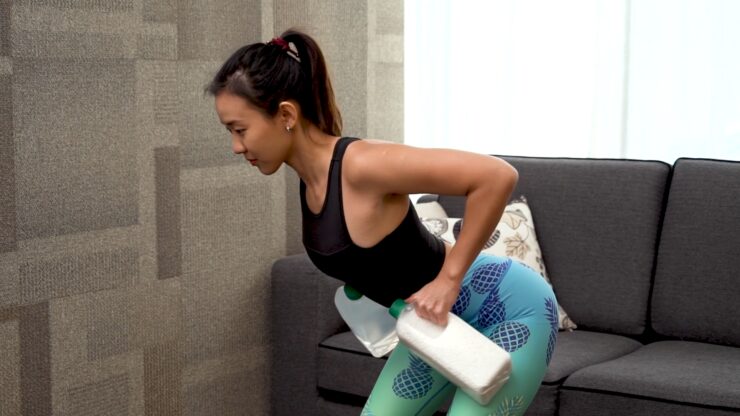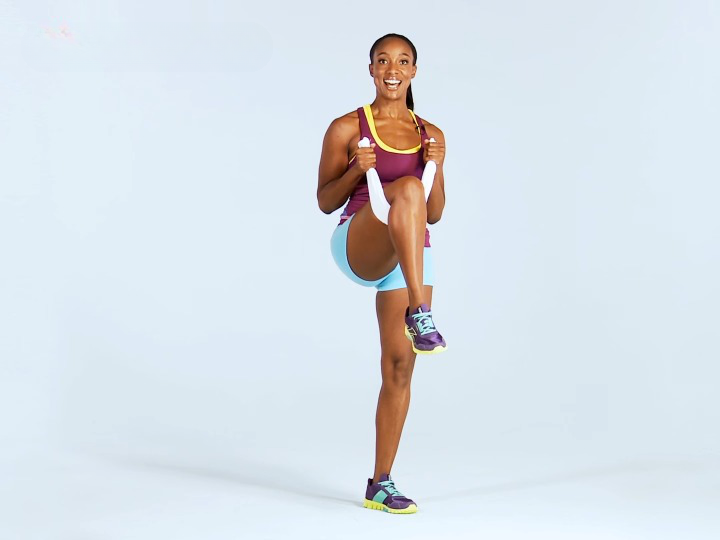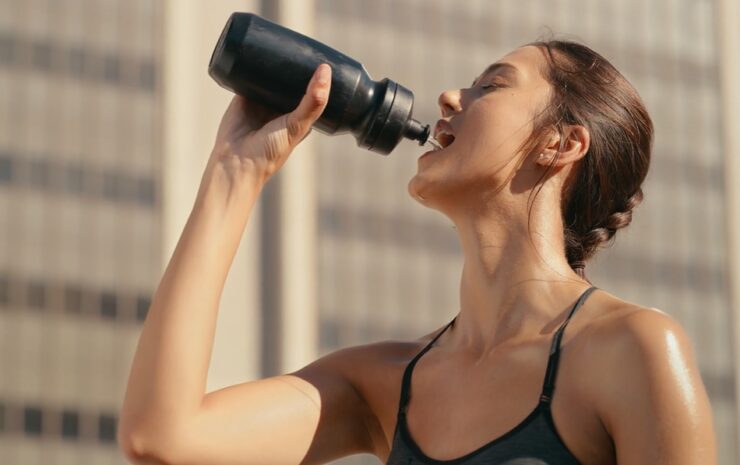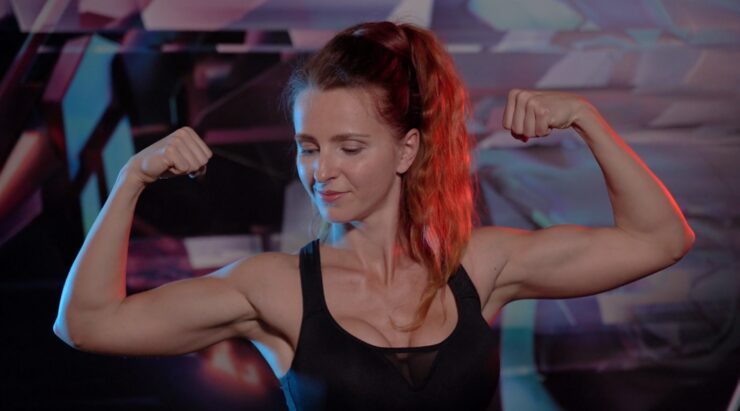Strengthening your arms and biceps is the foundation of any well-thought-out fitness program. Strong and muscly arms are certainly one of the most attractive features of a body in shape, but there is much more to it. In today’s article, we will talk about how to get bigger biceps at home without weights ASAP and how to do it effectively.
Strong biceps and arms are very important for numerous daily activities in our lives that require carrying, lifting, pushing, or pulling. However, to get a well-sculpted biceps, you need to work out, and not everyone enjoys going into crowded gyms and waiting in line to get on their favorite machines. Luckily there are ways to workout without gym weights from the comforts of your home, and we will break down some effective ways to do so. Let us start.
Contents
What Muscles Are You Targeting? – Biceps Anatomy
First things first, we are going to start by breaking down the biceps anatomy in order to figure out what type of exercise we need and how to do them effectively. Basically, the biceps is a two-headed muscle that is crucial in flexing your arms at the shoulder and elbow joints.
The muscle located along the underside of your upper arm is the triceps, so essentially, the biceps is the upper arm, and the triceps is the back upper arm. Both of these muscles are essential and visible, so working both out is crucial to your arm strength and looks.
Biceps Workout Methods for Working Out at Home
There is a total of two highly effective methods that can make your biceps muscle progress. The first method is lifting things, and it consists of lifting household stuff you never thought could be used as weights. It is an effective method, and on occasions, these exercises can be even harder to perform than with regular gym equipment.
The second method is using your body weight. What this means is that you will use your own body mass as a resistance. It is a highly effective method, especially when you want to work out somewhere where you get stuck without any weights.
Method No. 1 – Lifting (What to Lift, How to Do It)
As we already mentioned, lifting weights can be accomplished with heavy items from your household. You can get very creative with choosing weights to lift, and we are going to list some examples that can help you start.
- Plastic bottles
- Bags of rice, flour, or something similar
- Heavy books
- Socks filled with pea gravel
- Canned goods
- Detergent jugs
Our last recommendation is one of the most convenient methods. The detergent jugs come with handles and are better sealed than milk or juice jugs that tend to leak. The handles are rather comfy and will provide you with a secure grip when working out.
You can fill these jugs with liquid, but if you want to up the weight a bit, you can also fill them with some sand or slag. It will make the jugs much heavier, and you will be able to up the weights hassle-free.
How Much Should I Lift?
How much you should lift entirely depends on how many repetitions you can do in a single workout round. The standard number of repetitions per round is usually between eight and twelve reps since it is not too high to risk any injury but is high enough to test your endurance and force your muscle to make enough effort to grow.
The best way to determine how many repetitions you should do is to choose one weight and do one round of twelve reps. If you manage to finish the set without much effort and feel like you can do more, the weight is too light for you.
On the other hand, if you start feeling exhausted after only a couple of reps, then it is too heavy. Finally, if the first couple of reps feels relatively easy, but it gets progressively harder by the end of the set, you got the right weight.
Struggling to lift the weight but succeeding eventually will help you achieve hypertrophy, which is a term that basically means your muscle is growing. It is a type of auto-suggestion because your muscle “feels” the need to be stronger next time you workout and it starts growing.
You should always be mindful about the weights you are lifting, and as soon as they start feeling too light and too easy to lift, it is time to increase the amount of water or sand in the jugs to make the exercise more effective.
Bicep Curls Without Weights
The bicep curl is one of the most basic lifting exercises you can do from the comforts of your household. It is a simple yet highly effective exercise that you can do even when you are far away from home, on vacation, or something similar.
The way you approach this exercise is by standing with your arms at your sides as you hold a jug in each hand. Your upper part of arms should stay as close as they can to the sides throughout each workout round. Lift your right-hand jug up in front of you, and as you breathe out, bring it to your right shoulder. Flex your bicep as you lift but only move your forearm.
When the right hand is positioned in front of your right shoulder, squeeze really hard and hold the position for a second. Afterward, inhale as you lower the jug to the starting position, do three sets of eight to twelve reps, and rest for a minute and a half between each set.
If you want to up the performance, you can lift both jugs at the same time for the same number of repetitions. In addition, you can also sit toward the front edge of a chair or sofa instead of standing for this exercise.
Towel Bicep Curls
This is yet another simple exercise that is highly effective and very popular. The best thing about this workout method is that you can do it pretty much anywhere since it can be done with only bags and a towel. You can also slowly increase the weight by adding some heavy items to your bag.
It might seem confusing if you have never had a chance to see or perform this exercise, but it is pretty straightforward. You start by slipping your towel through the top of your backpack, grip each towel end with each hand and slowly curl the bag up.
As you move up through the movement, rotate your arms so that at the top position, your palms are facing your shoulders. You can also try to rotate your palms away from the body when you are at the top position for a couple of seconds and squeeze really hard to get a better effect.
Concentration Curls With a Jug
This is yet another type of bicep curl, and to perform this exercise, you need nothing but a single jug and some bench, sofa, or chair. Start by sitting down with your feet apart on the floor. Grab the jug with your right hand and lean forward by placing your right elbow against the inside part of your right thigh.
Extend your arm fully downward with both arm and wrist standing straight. Make sure that the jug is positioned near your right ankle and rest your left hand on your left knee. As you flex your right bicep when inhaling, lift the jug until it is at the level of your chest.
Hold this position for a couple of seconds, and then lower the jug back into starting position as you inhale. Breathing is crucial with this and any other exercise and is as important as the weight you are lifting. After 8 to 12 repetitions, switch the jug to your left hand and repeat the process.
The most important thing to keep in mind is to keep your composure. Only your forearm should be moving, nothing else. Do not rock your body, and try to reduce any type of jiggling or moving when lifting a jug.
Method No. 2 – Bodyweight Workouts for Biceps
There are numerous exercises for working your biceps without lifting any weights whatsoever. In fact, exercises in which you use your body as resistance can be even more effective than the ones with weights. This method is very creative and can also be very fun to perform. Here are some of the most effective bodyweight workouts for biceps you can try.
Bicep Curls With Your Leg
Yes, bicep curls can also be done by using your leg as a resistance. For this exercise, you will need a chair, sofa, or something similar to sit on. Take a seat, and use your hand to reach the under of your thigh, and hold it just above the back of your knee.
Lift your leg up as high as you can, and you can keep this exercise intentionally harder by ensuring you do not use any of your leg muscles to help the lifting. As this exercise becomes easier for you to perform, force your leg down to make it harder on your biceps. After eight to twelve repetitions, switch the leg and repeat the process.
Chin-Ups
Being able to lift your whole body weight is a significant sign that you are making progress in your workout sessions. Chin-ups are mainly back exercises, but there are ways to perform them the way it will strengthen your biceps as well.
The setup you require for this exercise is pretty basic, and instead of using fitness bars at the gym, you can install an exercise bar in your household wherever you find it most convenient.
The way you approach this exercise is with your palms facing you, grip the bar with your hands positioned slightly wider than your shoulder width. To activate the biceps more in this exercise, it is essential that the palms are facing you. If the palms face away from you, it will be an exercise that activates your back muscles more. The under-grip will ensure you target biceps muscles while still engaging large muscles on your back.
To do this chin-up, pull on the bar to lift your whole body until your face gets to the level of your hands. Keep your body as straight as possible, as swinging and jiggling can exert more energy out of you, and you want to keep your strength to do this exercise the right way.
As you grip the bar, slowly lower yourself back down most of the way. Do not let your feet reach the floor and repeat the process. The slower you do this exercise, the more effective it will be on your biceps muscle. It will keep the tension on your muscles, and as a result, your biceps will work harder.
As far as repetitions go, chin-ups are a very difficult and exhausting exercise to work on at first, so if you are a beginner, try doing as many repetitions as you can. For this exercise, it is crucial to avoid being lazy and push yourself as hard as you can to get the best effect.
Use Resistance Bands Instead of Weights
Using resistance bands for your biceps is arguably one of the most effective exercises you can perform. Some fitness enthusiasts even claim that this exercise is even more productive than lifting weights.
It is a fair point since resistance bands have variable tension, and unlike with weights, this exercise gets harder the more you squeeze your biceps. This way, you can work the “peak” of your biceps more than with some weights such as dumbbells, and it is an exercise that even professional bodybuilders commonly use.
You perform this exercise by holding each end of the resistance band in your arms, hanging straight down. Stand on the part of the band that reaches the floor, position your feet at the shoulders distance apart and keep your arms against your sides.
Once you take this position, start moving your forearms towards your shoulders, flex the biceps, and pull the handles of the resistance band up until your hands get to the shoulders. Hold this position for a few seconds, squeezing as hard as you can, then lower your arms to the starting position.
Flexing Actually Helps
You maybe already know this, but it is worth mentioning that flexing your biceps as hard as you can, can actually serve as an exercise without equipment. It is only natural to observe the progress you have made in front of a mirror every once in a while, and why not use that opportunity to exercise too?
You can do this by holding the flexed pose for ten seconds and then relaxing, resting a few seconds, then repeating the process. The process of flexing is also known as isometric tension, which refers to constant muscle tension, where the muscle is held in place.
To get the most out of this method, flex as hard as you can, and you will notice after holding the position for longer periods that you will feel exhausted once you release. The best period to do this is right after you finish your workout session, and it is a nice way to end your training.
Nutrition Is One of the Keys to Steady Biceps Growth
You can perform all the toughest exercises in the world and still fail to see significant progress if you do not feed your biceps with enough protein and quality nutrition. In fact, feeding your muscles after a workout is the most important thing to do in order to make them grow progressively.
To explain to you why this is so essential, we will break down what happens when you work out. Essentially, exercising creates micro tears in the muscle tissue, which is a normal thing to happen as a result of a hard and quality workout.
Afterward, your muscles need to recover, and in order to do so, you need to feed them amino acids that will repair them and make them grow. Of course, these amino acids come from protein. Basically, when you eat protein, your body breaks it down into usable amino acids.
You should dose the amount of protein intake based on your body weight. For example, if you weigh 160 lbs (72 kg), you should aim to consume between 160 and 200 grams of protein daily. Once you start with this type of nutrition, you will notice a change in your muscle growth relatively fast.
Prepare Your Own Meals and Eat Healthy Foods
As we mentioned, eating properly is the key to growing muscles, which is why you should get rid of habits such as eating junk food. Yes, it will get you full if you eat it, but it will promote the type of body weight that you definitely do not want. After all, the point is to get muscular, not fat.
The bottom line is that protein intake is the key, and there are countless ways to improve it through delicious home-prepared meals that will be delicious and serve the purpose of making you full and your muscle fed. You should start by splitting your protein meals into four to six meals, which will fuel your body throughout the whole day.
Here are some essential protein foods you should include in your diet:
- Eggs
- Poultry (turkey or chicken breast)
- Fish (salmon, tuna, bass)
- Lean meat (beef, lamb, veal, or pork)
There are also other types of protein, such as whey variation. You can find it in powder form, and it is great when mixed with milk, water, or smoothies, but you can also find prepared whey protein drinks on the market too. It is wise to consume whey protein after exercise, as it gets absorbed at a much higher rate than food.
Hydration Is Invaluable for Muscle Growth
Drinking a sufficient amount of water on a daily basis is important for numerous metabolic and organism functions, and muscle growth is one of them. In fact, the lack of sufficient hydration can cause metabolism and muscle breakdown, which is something that you definitely want to avoid.
Moreover, drinking lots of water helps nutrients get absorbed and keeps your muscles hydrated all day long. To put it simply, muscle grows a lot when you hydrate the way you are supposed to, so make sure to hydrate regularly before, during, and after your workout sessions.
Work Through the Pain
Performing exercises often causes soreness, especially if you work your muscles very hard. Contrary to popular belief, this is not something that only beginners experience, as even professional bodybuilders can occasionally feel this soreness after they push their limits.
This soreness is called delayed onset muscle soreness, and it can occur a couple of hours after the practice and peak 48 hours later, depending on the intensity of your workout. It is an aching that seems to be lingering for too long, but worry not because it takes up to seven days to go away completely.
Delayed onset muscle soreness or DOMS is different for every individual. For some, it does not always occur, and for some, it occurs when working out specific muscle groups. DOMS is considered a “good type of pain,” and often enough, people say it even goes away faster if you continue working hard through it.
However, do not push yourself to the limits as you might get the bad type of pain – injury pain. This type of injury may occur if you work out too hard or start lifting huge weights way too soon. Make sure to increase the intensity of your exercises gradually, and you will stay healthy and ready to work out another day.
How Often Should I Work Out My Biceps?
When it comes to muscle growth, working way too hard and way too much is not necessarily the best way to go. Muscle grows best when it is resting and regenerating tears you make during exercise. The general rule is that two workouts per week are plenty to get your biceps stronger and to start growing.
You can even get exceptional results by working your arms out just once per week, especially if you are more advanced and take part in intense exercises. It is also crucial to avoid working out the same muscle group on consecutive days. It is counterproductive; it does not let your muscle rest and can eventually result in a nasty injury.
The obvious example of why this approach is wrong is that if you do not let your biceps recover and feed sufficiently from the previous workout if you exercise them again, they will not grow, and in some situations, they might even get smaller.
If you are uncertain about how to approach this, let DOMS guide you. It is a pain that you will get 24 hours after an intense workout, and do not start working out your biceps until the pain is gone or at least passes to a certain degree.
Final Words
Building your biceps, as is the case with all other muscle groups, takes a lot of devotion, patience, and discipline. It is not something that will just grow overnight with minimum effort, and you need to adjust your workout and life habits in order to see the proper results.
It is also worth mentioning in the end that your biceps will get a much better structure if you do workouts that cover all the arm muscles. For example, the strong triceps makes your whole arm much bigger and musclier, and when it is well-developed, you will notice that your biceps also look mighty impressive as well.

Steve is a certified trainer with more than 10 years of training experience and he holds a Master’s in Sports Science. Prior to Boston Rock Gym, Steve worked for two years as a personal trainer.
